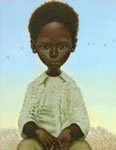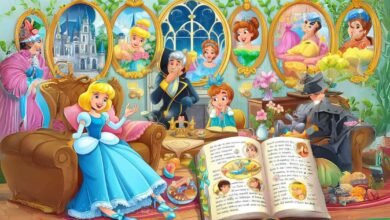The freedom box

By the mid-nineteenth century, there were four million slaves in the United States. The slaves were owned by their owners, as if they were tables, cows or wagons. Historians think that between 60,000 and 100,000 slaves regained their freedom through the Clandestine Railroad. The Clandestine Railway was not a true railway. It was a set of routes that slaves followed as they fled north. They hid in wagons, rode horses, walked hundreds of miles through forests and swamps, crossed rushing rivers in summer, and icy surfaces in winter. They were aided by “station chiefs” and “collectors” who hid them and assisted them throughout the escape.
When Henry Brown entered his “Freedom Box”, he believed it would transport him to a safe world. He took with him a tool to breathe holes in the box, some water and some cookies. By the time he reached Philadelphia from Richmond, Virginia, he had covered 560 kilometers in 27 hours. Its history has been the subject of news in America and Europe. Henry never found his wife and children. In 1850 he went to England and some say he remarried. But what is certain is that Henry “Box” [1] Brown has become one of the most celebrated fugitives of the Clandestine Railroad – the man who “commissioned” his freedom.
*****
Henry Brown didn’t know how old he was. He was a slave, and slaves could not know when they were years old. He worked with his brothers and sisters in the large plantation house where the owner lived. He had always been kind to them.
But Henry’s mother knew that this situation could change. One day, he commented with his son:
– See those leaves fluttering? They were plucked from the trees, just as the children of slaves are plucked from their families.
And one fine morning, the boss sent for Henry and his mother. Both climbed the wide staircase leading to the bedroom. The owner was in bed and only his head emerged from the duvet. He was very sick and asked them to approach. As some slaves were being freed by their owners, Henry’s heart pounded. Maybe the owner would set him free. But the boss said:
– You’ve been a good worker, Henry. I will give you to my son. You must obey him and never tell lies.
Henry nodded but didn’t thank him. To thank would be to lie.
On the afternoon of the same day, Henry saw a bird soar high above the trees. A free bird! A happy bird! He thought. Then he said goodbye to his family. When he looked at the fields, the leaves swirled in the wind.
The boy went to work for the new boss’s factory and worked well. But that didn’t stop him from shouting at him, and threatening him with a bat:
– Do not tear this tobacco leaf!
If the slaves made a mistake, the master would beat them.
Henry felt lonely. But one day, he met Nancy, who was shopping for her employer. They started talking as they walked together, and agreed to meet again. The boy now wanted to sing, though the slaves dared not sing in the street. Instead, he muttered in disguise on his way home.
Months later, Henry asked Nancy to marry him. After their bosses agreed, the young men got married. Soon a son was born, and then another, and then another. Henry knew they were lucky to live together, even though they had different bosses. But Nancy worried because her owner had lost a lot of money. One day she confessed to her husband:
“I fear he will sell our children.”
Henry was very silent. This morning he worked hard, trying to forget what his wife had said. But suddenly his friend James came into the factory and whispered to him:
– Your wife and children have just been sold in the slave market.
– Not! shouted Henry.
Suddenly he could not move, think, or work.
– Stir that tobacco! shouted the boss, pushing him with the stick.
As she stirred the tobacco leaves, her heart was stirring in her chest. At lunch time, he went to the city center. He saw a group of slaves tied to each other and the new owner shouting at them. Henry searched the family.
– Dad! Dad! – heard the call.
It was then that he saw his children disappear in the distance in the street. Where was Nancy? They saw each other at the same time, but it was too late. After wiping her tears, Henry realized that she, too, had disappeared.
Henry stopped singing and even singing. He went to work and ate and went to bed at night. He tried to remember the happy times he had been through, but he could only see the wagons hauling away all the people he loved. I knew I would never see my family again.
Many weeks passed. One morning Henry heard a little bird sing and saw it fly skyward. And thought it could be free. But how? When he picked up a wooden box, he knew the answer.
He asked James and Dr. Smith to help him. Dr. Smith was a white man who thought slavery was wrong. They met in an empty warehouse the next morning in the morning. Henry was carrying a box.
“I will go as a commission to a place where there are no slaves!” – announced.
James looked at the box and then at Henry.
– What if you cough and someone hears you?
“I’ll shut my mouth and hope,” Henry answered.
Dr. Smith wrote on the lid of the box:
To: William H. Johnson
Arch street
Philadelphia, Pennsylvania.
Henry would be given to friends in Pennsylvania. The doctor also wrote in the box, in capital letters:
THIS SIDE UP
Treat with care.
Henry needed an excuse to stay home, or the boss would think he had run away. James reminded her of the injured finger. But the friend knew that was not enough excuse. He opened a bottle of acid.
– Not! shouted James.
Henry put the acid in his hand and felt the burn seep into his bones. Now the boss would let you stay at home! Dr. Smith put a bandage on him and they agreed to meet the next morning at four o’clock. The sun had not yet risen, and Henry was already in the box.
– I’m ready! – announced.
James nailed the lid of the box and, along with Dr. Smith, took it to the station. The railroad employee turned the box over and nailed a piece of paper in the background. The doctor asked the porters to be careful, but no one paid any attention to him and threw the box into the freight car.
Hours passed, during which Henry was again raised and thrown upside down. He heard waves crashing. It must have been aboard the ship that was going to Washington, D.C. The boat was sailing slowly, but the slave was still upside down. Blood rushed to her head, her cheeks flushed, her eyes ached, and she really thought her head was going to burst. But he dared not move, afraid that someone might hear him.
– I’m tired of being up! said a voice.
– Why don’t we sit in this box? suggested another one.
Henry couldn’t even breathe. Were they talking about your box? He felt pushed. The box scraped the deck of the ship. They turned it to the right and left. Suddenly he felt upwards.
– What do you think is in here? asked one of the men.
“Mail, I think,” answered the other.
I am a courier, I am, but not the kind you think, Henry thought.
When the voyage was over, the box was taken off the ship and placed in a train carriage. This time, they followed the instructions. Henry fell asleep to the sound of the train wheels. He woke up with a hard knock.
– Henry, are you ok? asked a voice.
“I am,” he answered.
The lid has been lifted. The slave stretched his arms, got up and met the smile of four men.
Welcome to Philadelphia!
Henry now knew that it was March 30, 1849, his first day of freedom. From that day on, he also got another name: everyone called him Henry “Box” Brown.
[1] “Box” means “box” in English. (N.T.) Ellen Levine; Kadir Nelson Henry’s Freedom Box – A True Story from the Underground Railroad New York, Scholastic, 2007 [translation and adaptation]

